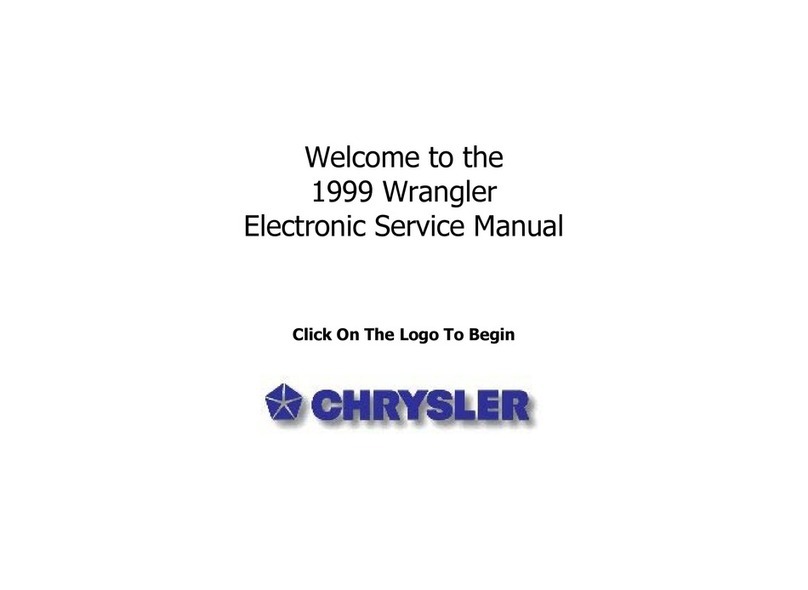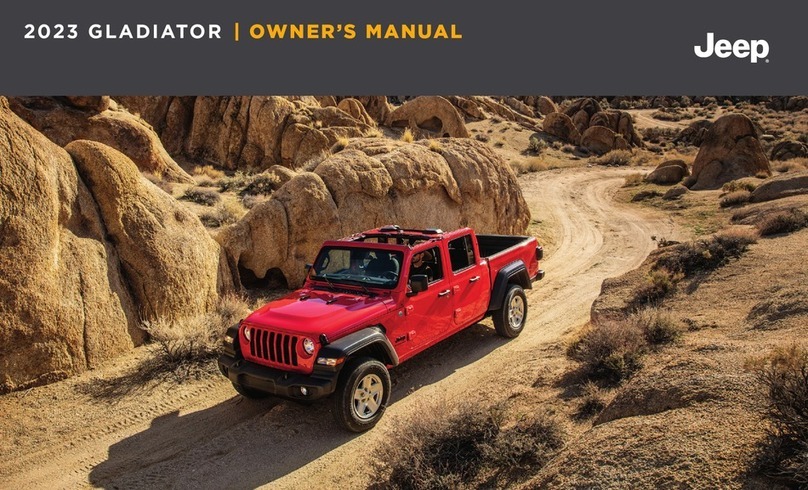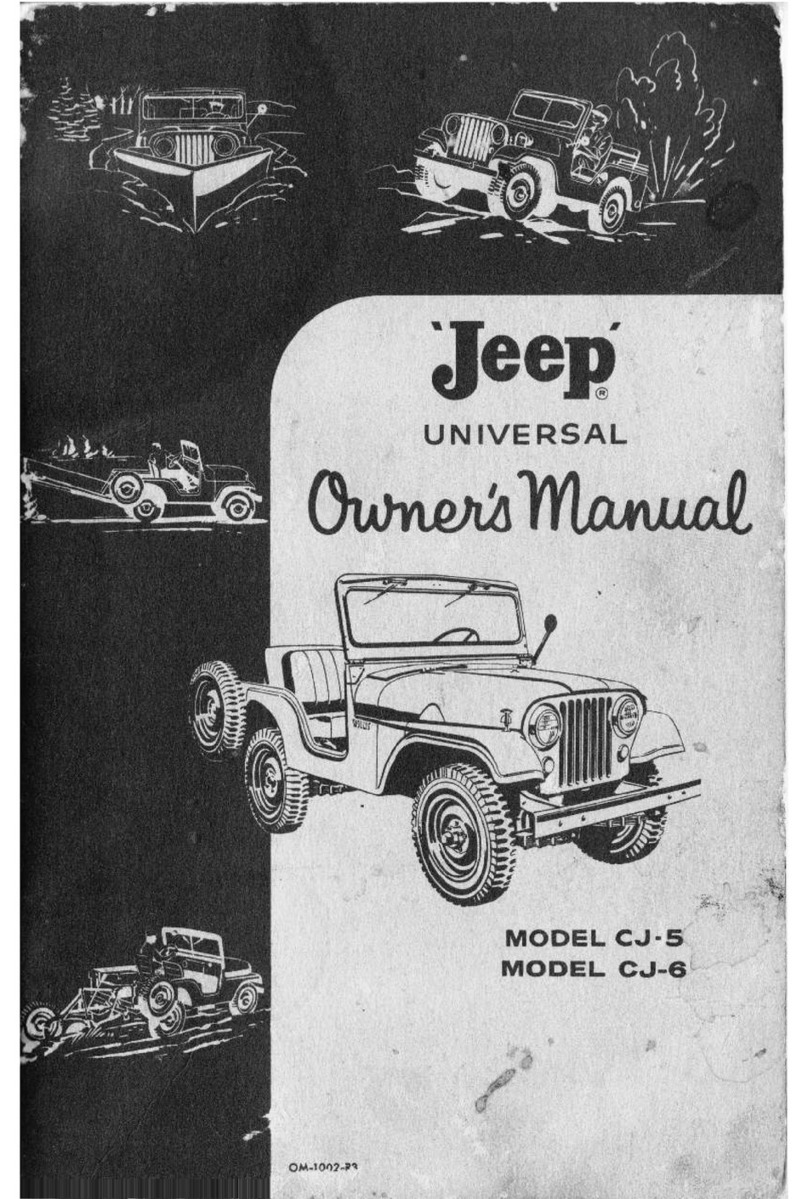
The CAB inputs include the following:
•four wheel speed sensors
•brake lamp switch
•ignition switch
•battery voltage
•diagnostic communication
•G switch (acceleration switch)
The CAB outputs include the following:
•six valve/solenoid drivers
•pump/motor actuation
•ABS warning indicator control
•diagnostic communication
3.1.5 HYDRAULIC CONTROL UNIT
The hydraulic control unit (HCU) contains the
valve block assembly, three accumulators, and the
pump/motor assembly.
Valve Block Assembly: The valve block assem-
bly contains 6 valves with three inlet valves and
three outlet valves. The inlet valves are spring-
loaded in the open position and the outlet valves are
spring loaded in the closed position. During an
antilock stop, these valves are cycled to maintain
the proper slip ratio for each channel. If a wheel
locks, the inlet valve is closed to prevent any further
pressure increase. Then the outlet valve is opened
to release the pressure to the accumulators until
the wheel is no longer slipping. Once the wheel is no
longer slipping, the outlet valve is closed and the
inlet valve is opened to reapply pressure. If the
wheel is decelerating within its predetermined lim-
its (proper slip ratio), both valves will close to hold
the pressure constant.
Pump/Motor Assembly: The pump/motor as-
sembly provides the extra amount of fluid needed
during antilock braking. The pump is supplied fluid
that is released to the accumulators when the outlet
valve is opened during an antilock stop. The pump
is also used to drain the accumulator circuits after
the antilock stop is complete. The pump is operated
by an integral electric motor. This motor is con-
trolled by the CAB. The CAB turns on the motor
when an antilock stop is detected. The pump con-
tinues to run during the antilock stop and is turned
off approximately 3-5 seconds after the stop is
complete. The pump mechanism consists of two
opposing pistons operated by an eccentric cam. One
piston supplies the primary hydraulic circuit. The
opposing piston supplies the secondary hydraulic
circuit. In operation, one piston draws fluid from
the accumulators. The opposing piston pumps fluid
to the valve body solenoids. The CAB monitors the
pump/motor operation.
Accumulators: The accumulators provide tem-
porary fluid storage during an antilock stop and are
drained by the pump/motor.
3.1.6 RELAYS/SWITCHES
Relays: The ABS Relay is located in the power
distribution center (PDC). When the relay is de-
energized, it supplies a ground to turn on the ABS
warning indicator. The ABS relay is controlled by
the CAB. The CAB energizes the relay when it
receives an ignition input signal.
3.1.7 SENSORS
Wheel Speed Sensors and Tone Wheels: One
wheel speed sensor (WSS is located at each wheel
and sends a small AC signal to the Controller
Antilock Brake (CAB). This voltage is generated by
magnetic induction when a toothed sensor ring
(tone wheel) passes by a stationary magnetic sensor
(wheel speed sensor). The CAB converts the AC
signals into digital signals for each wheel.
The front wheel sensor is attached to a boss in the
steering knuckle. The tone wheel is an integral part
of the front axle shaft. The rear speed sensor is
mounted in the caliper adapter plate (rear disc only)
and the rear tone wheel is an integral part of the
rear rotor hub. The front wheel speed sensor air gap
is NOT adjustable. The correct front wheel speed
sensor air gap is from 0.40mm to 1.3mm (0.0169to
0.0519). Preferred rear sensor air gap for drum
brake systems is 1.1mm (0.0439).Acceptable air gap
range is 0.92mm to 1.275mm (0.0369to 0.0509). All
wheel speed sensors have a resistance between 900
and 1300 ohms.
Correct antilock system operation is dependent
on correct wheel speed signals from the wheel speed
sensors. The vehicle’s wheels and tires should all be
the same size and type. In addition, the tires should
be inflated to the recommended pressures for opti-
mum system operation. Variations in wheel and tire
size or significant variations in inflation pressure
can produce inaccurate wheel speed signals; how-
ever, the system will continue to function when
using the mini-spare. When driven over rough road
surfaces, the rear wheel speed sensor signals may
be erratic and cause a false trouble code.
G (Acceleration) Switch: The CAB monitors
the acceleration switch at all times. The switch
assembly contains three mercury switches that
monitor vehicle deceleration rates (G-force). Sud-
den, rapid changes in vehicle and wheel decelera-
tion rate trigger the switch, sending a signal to the
CAB. The switch assembly responds to three decel-
eration rates; two for forward braking and one for
rearward braking.
3
GENERAL INFORMATION



















































